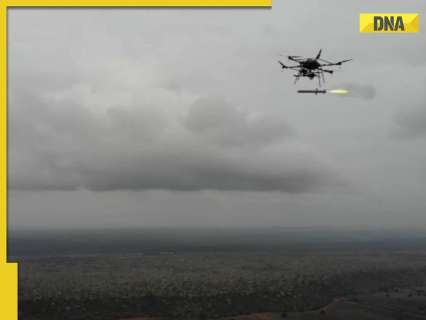
In a social media post on X, the Defence Minister extended greetings to the Defence Research and Development Organisation (DRDO) and its industry partners for the achievement.
Defence Minister Rajnath Singh on Friday announced that India has conducted the successful flight trials of the UAV Launched Precision Guided Missile (ULPGM)-V3 in the National Open Area Range, test range in Kurnool district of Andhra Pradesh.
In a social media post on X, the Defence Minister extended greetings to the Defence Research and Development Organisation (DRDO) and its industry partners for the achievement.
The social media post read, “In a major boost to India’s defence capabilities, @DRDO_India has successfully carried out flight trials of UAV Launched Precision Guided Missile (ULPGM)-V3 in the National Open Area Range (NOAR), test range in Kurnool, Andhra Pradesh.
July 25, 2025
“Congratulations to DRDO and the industry partners, DcPPs, MSMEs and Start-ups for the development and successful trials of the ULPGM-V3 system. This success proves that the Indian industry is now ready to absorb and produce critical Defence Technologies,” it added.
Earlier in May, the Indian Army undertook extensive Capacity Development Demonstrations at key locations across the country, including the Pokhran Field Firing Ranges, Babina Field Firing Ranges, and Joshimath, with dedicated Air Defence equipment demonstrations also scheduled at Agra and Gopalpur.
According to an official press release issued on May 31, these field trials were conducted under near-combat conditions, integrating electronic warfare simulations to assess the performance of cutting-edge defence systems rigorously.
On May 27, General Upendra Dwivedi, Chief of the Army Staff, visited Babina Field Firing Ranges and reviewed the ongoing demonstrations and interacted with all stakeholders.
The demonstrations featured a wide array of advanced technologies developed under the Aatmanirbhar Bharat initiative, aimed at accelerating indigenous capability development.
The trials mark a significant step in the Indian Army’s roadmap for a “Decade of Transformation” and are designed to ensure rapid absorption of emerging technologies to meet evolving battlefield requirements.
A large number of defence industry partners also took part in the demonstration, reflecting the increasing synergy between the Indian Army and domestic manufacturers.
Key platforms undergoing evaluation included Unmanned Aerial Systems (UAS), UAV Launched Precision Guided Munition (ULPGM), Runway Independent (RWI) Remotely Piloted Aerial Systems (RPAS), Counter-UAS Solutions, Loitering Munitions, Specialised Vertical Launch (SVL) Drones, Precision Multi Munition Delivery Systems, Integrated Drone Detection and Interdiction System (IDDIS), Low Level Light Weight Radars, VSHORADS (Next Generation) IR Systems and Electronic Warfare (EW) Platforms.
Who developed the ULPGM-V3 laser-guided anti-tank missile?
The Research Centre Imarat (RCI) of DRDO created the laser-guided anti-tank missile known as the ULPGM-V3. This man-portable, lightweight weapon is made to precisely destroy enemy targets that are strongly armored. With enhanced targeting and guidance capabilities, the V3 version is a more sophisticated version that expands on the previous prototypes.
What features make the ULPGM-V3 effective for use in isolated and hilly areas?
The ULPGM-V3 is distinguished by its top-attack mode, laser-guided accuracy, and lightweight design. It can be carried and used by lone personnel in isolated and hilly areas, unlike more complex missile systems. To destroy tanks with explosive reactive armor (ERA), it also has a tandem warhead.
(With inputs from ANI)





